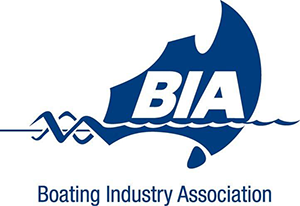15% OFF ALL RAILBLAZA - use code RAIL15
BUY NOWBILGE PUMPS - Things you never knew
The Secret Life of Bilge Pumps**
Part 1
There are two basic reasons for having a bilge pump:
1. To remove large amounts of water from the bilge in an emergency or in a place that collects water purposely. From now on, this will be called a bilge pump.
2. To clear out nearly all the water in a bilge area so the floor stays dry. From now on, this will be called a drying pump. Putting an immediate distinction in the name helps you to determine your needs for
each place you want to place a pump.
These two uses are very different and yet most people try to accomplish both functions with one pump. This often meets with failure or the need to put a check valve into the hose to stop water from coming back into the bilge. Check valves will have their own newsletter segment later because they are overused, potentially dangerous, and often not needed.
For now, let's just say that every attempt to eliminate check valves should be done in your bilge systems. They are common causes of failure and greatly increase the resistance needed to pump water through a hose.
The main type of bilge pump used is a centrifugal pump. These are the typical Rule pumps ranging from 500 gallons per hour (GPH) to 2000 GPH and more. They are useful in moving a lot of water but they are terrible at stopping water that wasn't pumped overboard from coming back down the hose. They can also get clogged with debris and fail.
There are a few types of drying pumps but diaphragm pumps are often the ones found on boats. They are super reliable and rarely become jammed by debris. They're able to pump dry but they aren't usually fast at pumping large amounts of water. The pump is often mounted away from the bilge area with a very flat pick up to completely dry an area.
In the best of all worlds, imagine a high volume centrifugal bilge pump mounted higher than the pickup for a diaphragm drying pump. Small amounts of water would be removed by the drying pump. The full bilge pump wouldn't turn on unless a larger amount of water flooded and it was truly needed. The high-volume bilge pump wouldn't be used as much and will be more reliable and stay debris-free. All this while keeping the bilge much dryer.
This is background information to help you understand your own bilges. Poke around your own boat and understand what you have. We'll continue this series next with some specific problems and methods for making your bilge and drying pumps work more reliably.
Part 2
Bilge pumps and anchoring have a lot in common. They seem so simple. And yet, there are small details that can make big differences. And like anchoring, bilge pumps are one of the key safety elements on every boat.
Throughout this summer, Red Head has been swarmed with mechanics and techs from Zimmerman's who are rebuilding some of the systems. This has put us in daily contact with exceptional boat builders and mechanical experts. Nearly every day there are over 100 years of experience replacing and fixing things on the boat. Conversations often develop as we're down in the engine rooms doing projects ourselves. These conversations created many, "I never thought about that" reactions by us. Here's just one of them.
You likely have multiple bilge pumps in your boat. If you've been boating for any length of time, there are often a few that burn out or go bad. This can sometimes happen because of bad float switches and
automatic mechanisms that turn the pump on and off - the potential subject of other newsletters. But there is something so basic that we had never realized about bilge pumps.
Red Head has about a dozen bilge pumps of various size - 800 gallons per hour (GPH) to 2000 GPH along with a huge, central emergency bilge pump and fire system. Some bilge areas are larger and have larger pumps while sump pumps and condensation collection basins have smaller pumps. That makes perfect sense. Or does it?
There are 4 larger pumps in the main bilge of the boat - they are 1500 and 2000 GPH pumps. But they keep failing. Two failed in June and were replaced. Another failed this month.
"The problem is the outflow hose," said Caleb as I was expressing frustration about the poor quality of the pumps and how they should be lasting much longer. "The hose?" Come on - what could be simpler? Then he showed me.
For whatever reason, every thru hull outlet on the boat has a 3/4" opening. Caleb showed me that the 2000 GPH pump that failed has a 1-1/8" port on the pump. It's designed to push water out that size hose. To connect to the 3/4" hose, an adapter was placed at the pump. That restriction of water creates resistance to the flow. The pump has to work much harder to overcome that immediate restriction. It ends up burning out faster.
Now look at an 800 GPH pump. It comes with a 3/4" hose port. The pump manufacturer is telling us to use that pump for a 3/4" outlet. But we're not listening.
So as a first step in making your own bilge pumps more reliable, go check them and the thru hulls. Are they matched in size? Are you experiencing shorter life on the larger pumps? Perhaps the next switch
should be to a smaller pump that will push just as much water, but not burn out. They're also much less expensive.
Karen and Jeffrey Siegel
Red Head
Key Largo, FL
** Republished from Active Captain. Copyright (c) 2016 Active Corporation. All Rights Reserved.


